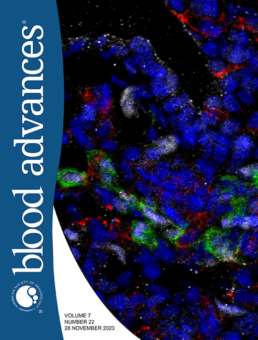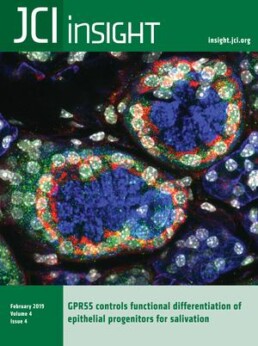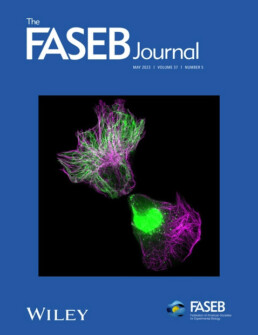Publications
Isoquercetin for thromboinflammation in Sickle Cell Disease: a randomized double-blind placebo-controlled trial
Maria A. Lizarralde-Iragorri, Bindu Parachalil Gopalan, Brenda Merriweather, Jennifer Brooks, Mai Hill, Dianna Lovins, Ruth Pierre-Charles, Ann Cullinane, Alina Dulau-Florea, Duck-Yeon Lee, Rafael Villasmil, Neal Jeffries, Arun S. Shet
Data from a small trial in cancer patients suggest that isoquercetin treatment lowered thrombosis biomarkers and prevented clinical thrombosis but no studies of isoquercetin have been conducted to target thromboinflammation in adults with sickle cell disease (SCD). We conducted a randomized, double-blind, placebo-controlled trial in adults with steady state SCD (HbSS or HbSß0thal or HbSß+thal or HbSC). The primary outcome was the change in plasma soluble P-selectin (sP-selectin) post-treatment compared to baseline, analyzed in the intention-to-treat population. Between November 2019 and July 2022, 46 patients (age 40 ± 11 years, 56% female, 75% under hydroxyurea treatment) were randomized to receive isoquercetin (n=23) or placebo (n=23). Isoquercetin was well tolerated and all the adverse events (AEs=21) or serious AEs (14) recorded were not attributable to the study drug. The mean post-treatment change for sP-selectin showed no significant difference between the treatment groups (IQ=0.10 ± 6.53 vs. placebo=0.74 ± 4.54; p=0.64). In isoquercetin treated patients, whole blood coagulation (p=0.03) and collagen-induced platelet aggregation (p=0.03) were significantly reduced from the baseline. Inducible mononuclear cell tissue factor gene expression and plasma PDI reductase activity were also significantly inhibited (p= 0.003 and 0.02 respectively). Short term fixed dose isoquercetin in patients with SCD was safe with no off-target bleeding and was associated with changes from the baseline in the appropriate direction for several biomarkers of thromboinflammation.
Targeting protein disulfide isomerase with the flavonoid isoquercetin to improve hypercoagulability in advanced cancer.
Jeffrey I. Zwicker, Benjamin L. Schlechter, Jack D. Stopa, Howard A. Liebman, Anita Aggarwal, Maneka Puligandla, Thomas Caughey, Kenneth A. Bauer, Nancy Kuemmerle, Ellice Wong, Ted Wun, Marilyn McLaughlin, Manuel Hidalgo, Donna Neuberg, Bruce Furie, Robert Flaumenhaft1 on behalf of CATIQ Investigators
The release of protein disulfide isomerase (PDI) from cells during disease or in response to injury can exacerbate pathological processes, including thromboembolism, and, as such, is currently being explored as a therapeutic target. In this episode, Jeffrey Zwicker and colleagues report on the results of a multicenter phase 2 trial of the PDI-targeting flavonoid isoquercetin in cancer patients at high risk of thrombosis. Isoquercetin inhibited PDI activity in plasma and decreased platelet-dependent thrombin generation in a dose-dependent manner. Moreover, patients that received a higher dose had reduced levels of coagulation markers in circulation, supporting further evaluation of isoquercetin in patients at risk of thrombosis.
Targeting thiol isomerase activity with zafirlukast to treat ovarian cancer from the bench to clinic.
Justine A. Gelzinis, Melanie K. Szahaj, Roelof H. Bekendam, Sienna E. Wurl, Megan M. Pantos, Christina A. Verbetsky, Alexandre Dufresne, Meghan Shea, Kaitlind C. Howard, Oleg V. Tsodikov, Sylvie Garneau-Tsodikova, Jeffrey I. Zwicker, Daniel R. Kennedy
Thiol isomerases, including PDI, ERp57, ERp5, and ERp72, play important and distinct roles in cancer progression, cancer cell signaling, and metastasis. We recently discovered that zafirlukast, an FDA-approved medication for asthma, is a pan-thiol isomerase inhibitor. Zafirlukast inhibited the growth of multiple cancer cell lines with an IC50 in the low micromolar range, while also inhibiting cellular thiol isomerase activity, EGFR activation, and downstream phosphorylation of Gab1. Zafirlukast also blocked the procoagulant activity of OVCAR8 cells by inhibiting tissue factor-dependent Factor Xa generation. In an ovarian cancer xenograft model, statistically significant differences in tumor size between control vs treated groups were observed by Day 18. Zafirlukast also significantly reduced the number and size of metastatic tumors found within the lungs of the mock-treated controls. When added to a chemotherapeutic regimen, zafirlukast significantly reduced growth, by 38% compared with the mice receiving only the chemotherapeutic treatment, and by 83% over untreated controls. Finally, we conducted a pilot clinical trial in women with tumor marker-only (CA-125) relapsed ovarian cancer, where the rate of rise of CA-125 was significantly reduced following treatment with zafirlukast, while no severe adverse events were reported. Thiol
isomerase inhibition with zafirlukast represents a novel, well-tolerated therapeutic in the treatment of ovarian cancer.



